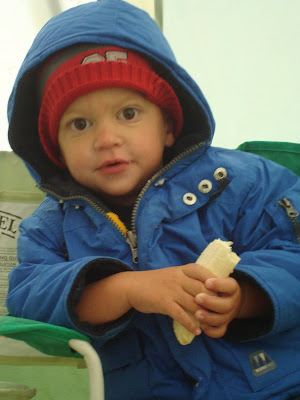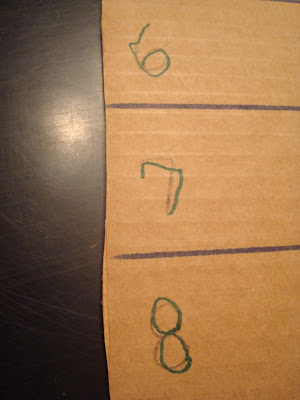This is a really easy game that comes together quickly.
My boys loved it.
Milk Jug Catch
Materials Needed:
- Washed out Milk Jugs
- String or Yarn
- Scissors
- Squishy Balls
Start by cutting off the bottom half of your milk jugs.
Make sure the handle is still in tact.
Using your scissors, poke a hole just under the spout.
Run your string through and tie a knot.
Then tie the othr end around your ball.
And you're done!
The idea is to swing the ball and catch it in the carton.
It is surprisingly hard for a 4 year old, so he cheats...
It is surprisingly hard for a 4 year old, so he cheats...
This has actually turned out to be a bigger success than I thought. We don't go anywhere without his 'squishy ball' these days.
Have fun!

















































